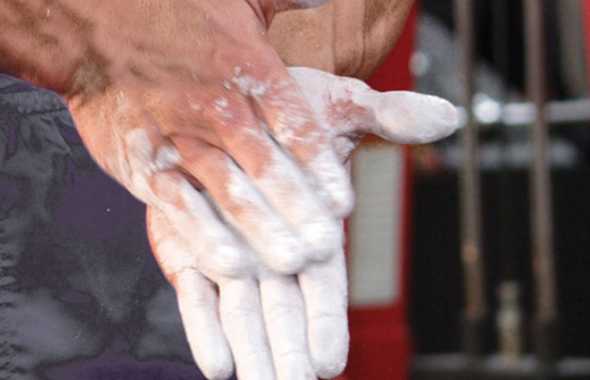Many people use it, but few know it real utility and purpose of magnesium in the CrossFit. Used a lot in gymnastics, he has become indispensable even in the box. But what are the differences between the various types?
First you need to understand what it is for! It is physiological to sweat while exercising and metal tools tend to slip out of our hands. And here magnesite comes into use: helping to improve la pinch (made with three fingers) during the movements.
It should mainly be applied when working on the bar or rings, but it can also be used for other movements; to be sure not to lose your grip when the reps are many.
In commerce you can find various types; you need to understand what is the best for your performance or for your hands. But excessive use does dry the skin and reduces its elasticity e and gets the opposite result, wounded hands and painful open calluses.
So to speak, we have brought together the main types that are on sale:
- In powder;
- Grainy;
- Solid;
- liquid;
Index
BUT WHAT ARE THE DIFFERENCES?
-
IN POWDER
It is often found inside the buckets in the box; it is a fine white powder, easy to use. Just insert your hands inside. Dirty and dispersed in the air so it is not recommended in closed environments.
It allows you to "dry" your hands quickly and immediately; if used too much, however, dry the skin and increase the risk of injury.
-
GRANULOSA
Very similar to the powder, these are blocks of magnesium that must be broken with the hands inside the bucket. It has the advantage of being much less dispersed in the air, so that less is wasted.
It dries the sweat of the hands a little less than the powder one, but the grip it should be the same.
-
LIQUID
It is the most expensive, but very effective. Generally it is a mixture of magnesium and alcohol. The only thing is that it must be applied and you have to wait a few minutes to let it dry.
Provides excellent grip and less irritation to the skin on your hands.
-
SOLID
It is found in panetti, practically a plaster brick that must be rubbed on the hands. It has the advantage of not making dust and lasts longer than compared to dust.
It gives the same result in terms of grip and a little less dirt around.
In short, the results are the same, but everyone can find themselves better or worse with one or the other type. It is worth remembering that there is no need to leave your hands completely white to improve your grip; a thin layer that prevents moisture from your hands is sufficient for a good result.
Do you know the coach who constantly repeats not to use too much? Now you know why. Use it sparingly!

